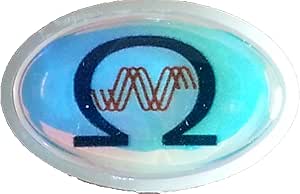No matter if you live in a house or apartment, or you just want to keep your home free of electromagnetic fields There are a variety options to limit your exposure. One of the easiest is to reduce the use of electronic devices. You could also consider EMF blocker paint to block EMF radiation from reaching your home. Click for info to protect your home against EMF radiations is to use an RF shielding canopy. It is a type of net that contains EMF shielding. It is utilized to stop EMFs from entering rooms. Another alternative is to have your home fitted with a conductive enclosure. https://k12.instructure.com/eportfolios/372604/Home/Details_of_Emf_Blocking_Radiation_2 are referred to as Faraday cages.
Several studies have shown that the non-ionizing RF EMF produces antiproliferative effects in HCC cells. The mechanism behind AM RF EMF's anticancer activity in vitro is thought to be based on the downregulation of cancer stem cells. This may account for the long-term responses seen in patients suffering from advanced HCC. But, the reason for AM EMF's effects on cancer patients is not yet clear.
The effects on the effects of AM RF EMFs on HCC tumor growth in vivo was studied in mice. The tumours were divided in three different groups. First, the group that was unaffected RF EMF. The second group was exposed RF EMF at frequencies similar to the one used by humans. In the third, they were subjected RF EMF with HCC-specific modulation frequencies. The effects of HCCMF on tumors was compared to that of RCF. The results revealed that tumors treated by HCCMF had significant shrinkage. However, https://cyclestraw4.werite.net/post/2023/04/14/Facts-About-Emf-Blocking-Radiation8 treated with RCF did not show any evidence of shrinkage in the tumour.

The reason for tumour-specific AM RF EMF could be based on the fact that cancer cells require Cav3*2 voltage calcium channels for their proliferation and down-regulation. AM RF EMF's ability to inhibit proliferation upon HCC cells is controlled by CACNA1H, a protein that mediates tumour-specific Ca2+ influx. The results suggest that CACNA1H may have broader implications for the treatment and diagnosis of different cancers.
The tumours in the controls were never exposed RF EMF, and were fed a normal diet of mice. The tumors of those in the HCCMF group were treated with Huh7 cells after they were five-seven weeks old. The tumours were then euthanized after they had a high burden.
The tumours from the three groups also displayed different growth curves. The tumours treated with HCCMF had a significant reduction in the size of the tumour after eight weeks. However, the tumours which were treated by RCF showed no shrinkage. The difference was substantial. The tumors treated with RCF were able to show necrosis, which is common in tumours that are exposed to RCF. It is possible that this necrosis was due to a lack of oxygen in the more invasive tumors.
In sum, the results show an AM-RF EMF has anticancer properties in vitro as well as in the vivo. Several studies have shown it is true that AM RF EMF produces measurable reduction in tumours for HCC patients. The possibility is that the AM EMF triggers these effects because of CACNA1H which is a protein involved in the process of tissue-specific Ca2+ influx. In addition, AM RF EMF may have a long-lasting impact on the growth of HCC tumors in the vivo.
